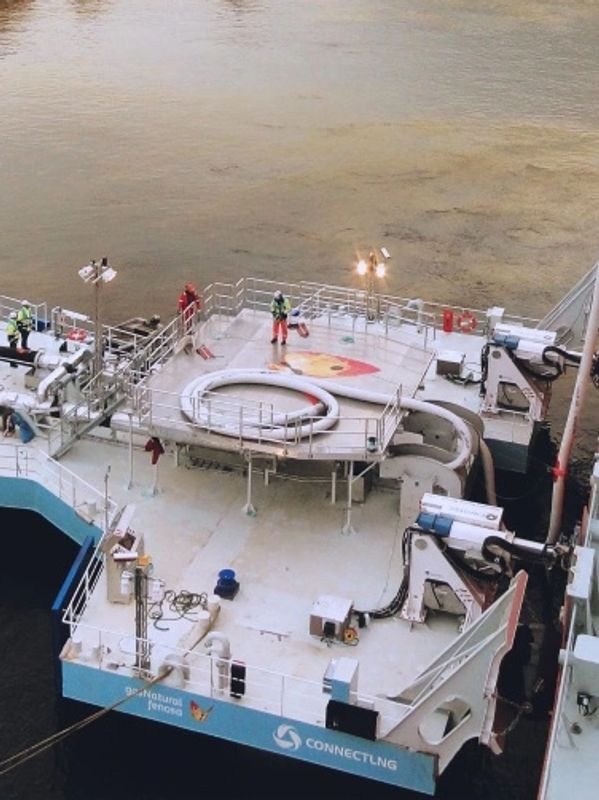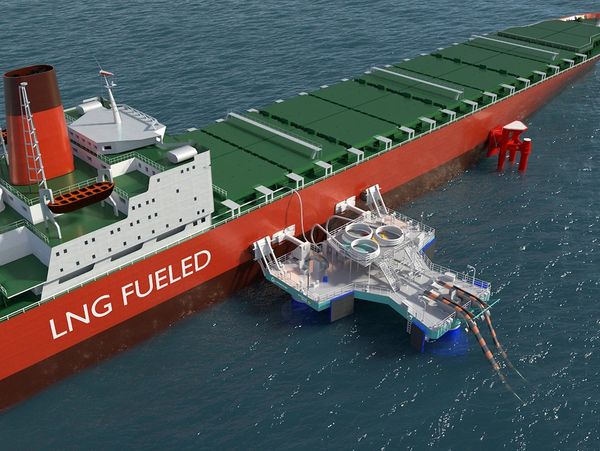EN
Translate:
EN
EN
Translate:
EN

As of 1 January 2020, the International Marine Organization (IMO) enforced stricter emission requirements, with the grand aim of improving the environment and the health of the world's population.
The aim is to curb sulphur emissions and have a mandatory requirement to switch to lower sulphur shipping fuels, with a 0.5 wt% global sulphur cap for marine fuels used in international shipping.
Owing to this factor, the LNG and renewables bunkering market is expected to witness significant growth in the years to come, as LNG is likely to be an economic and greener marine fuel alternative.

Many ports are investing heavily in LNG and renewable fuel infrastructure for bunkering purposes. With IMO catalysing change in the shipping industry, this creates a good basis for establishing an infrastructure of small- and medium-scale terminals, bunker vessels and trucks for supplying LNG as a bunker fuel.
New infrastructure can be costly, and the only way to improve return on investment is combining economies of scale, flexible migration strategies and innovative technical solutions to reduce overall investment risk.



What's something exciting your business offers? Say it here.
The IQuay is designed for flexibility, so customers can combine Gas-to-Power with Bunkering operations in one single IQuay.
Distance from shore
50 - 800 m
Environment
Sheltered to harsh conditions
Flowrate
500 - 1,000 m3/h
Transfer lines
Floating flexible hoses
Vessel size
All
Design life
25 years
Our bunkering from quayside solution is suitable to a wide range of vessels and can be stored when not in use.
Distance from shore
Up to 300 m
Environment
Sheltered conditions
Flowrate
500 - 1,000 m3/h
Transfer lines
Rigid pipe
Vessel size
All
Design life
25 years




Shipping LNG overseas is by far the most common way to transport natural gas in liquid form. When LNG plants and fields are situated in remote areas, transportation of LNG by ship is often the preferred, or perhaps even the only, alternative for transporting natural gas. Therefore, LNG ships makes a key link in the LNG value chain, enabli
Shipping LNG overseas is by far the most common way to transport natural gas in liquid form. When LNG plants and fields are situated in remote areas, transportation of LNG by ship is often the preferred, or perhaps even the only, alternative for transporting natural gas. Therefore, LNG ships makes a key link in the LNG value chain, enabling transportation of gas between the liquefaction plant and regasification site.

Shipping LPG overseas is by far the most common way to transport natural gas in liquid form. When LPG plants and fields are situated in remote areas, transportation of LPG by ship is often the preferred, or perhaps even the only, alternative for transporting natural gas. Therefore, LPG ships makes a key link in the LPG value chain, enabli
Shipping LPG overseas is by far the most common way to transport natural gas in liquid form. When LPG plants and fields are situated in remote areas, transportation of LPG by ship is often the preferred, or perhaps even the only, alternative for transporting natural gas. Therefore, LPG ships makes a key link in the LPG value chain, enabling transportation of gas between the liquefaction plant and regasification site and/or Loading ISO Tank Containers Depot.

Shipping BLCO overseas is by far the most common way to transport crude oil in bulk form. When crude oil refinery plants and fields are situated in remote areas, transportation of BLCO by ship is often the preferred, or perhaps even the only, alternative for transporting crude oil. Therefore, BLCO ships makes a key link in the BLCO value
Shipping BLCO overseas is by far the most common way to transport crude oil in bulk form. When crude oil refinery plants and fields are situated in remote areas, transportation of BLCO by ship is often the preferred, or perhaps even the only, alternative for transporting crude oil. Therefore, BLCO ships makes a key link in the BLCO value chain, enabling transportation of oil between the crude oil refinery plant and final petrochemicals refinery site.

Shipping LPFO overseas is by far the most common way to transport LPFO in bulk form. When crude oil refinery plants and fields are situated in remote areas, transportation of LPFO by ship is often the preferred, or perhaps even the only, alternative for transporting low pour fuel oil. Therefore, LPFO ships makes a key link in the LPFO val
Shipping LPFO overseas is by far the most common way to transport LPFO in bulk form. When crude oil refinery plants and fields are situated in remote areas, transportation of LPFO by ship is often the preferred, or perhaps even the only, alternative for transporting low pour fuel oil. Therefore, LPFO ships makes a key link in the LPFO value chain, enabling transportation of oil between the crude oil refinery plant and heating site.
Copyright © 1997 - 2024 Canaf Petro-Chemicals Refinery™ (CPCR) - All Rights Reserved.
This website uses cookies. By continuing to use this site, you accept our use of cookies.